Neck Lift in Ireland
Search and Compare the Best Clinics and Doctors at the Lowest Prices for Neck Lift in Ireland

Find the best clinics for Neck Lift in Ireland
No clinics available
Thailand offers the best prices Worldwide
Price: $ 275

- Home
- Ireland
Compare Before & After Photos of _procedure_photos.phpNeck Lift
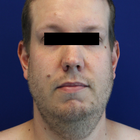

Front view
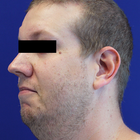
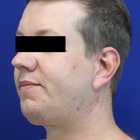
Half-side view
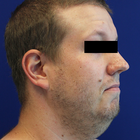

Full-side view
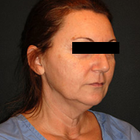
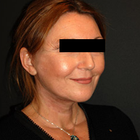
Half-side view
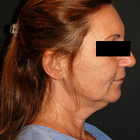
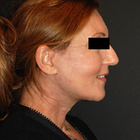
Full-side view
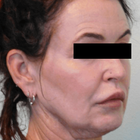
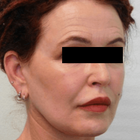
Half-side view
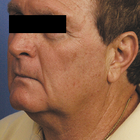
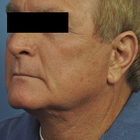
Half-side view


Front view
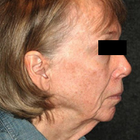
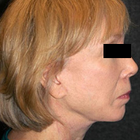
Full-side view
WHY US?
At Medijump, we're making medical easy. You can search, compare, discuss, and book your medical all in one place. We open the door to the best medical providers worldwide, saving you time and energy along the way, and it's all for FREE, no hidden fees, and no price markups guaranteed. So what are you waiting for?

Free

Best Price

Widest Selection

Risk-Free
What you need to know about Neck Lift in Ireland

Aging is inevitable as you grow older, the good news is that technological advancements in the medical field have now found exemplary ways to slow down the aging process.
Over time, we lose our youthful contours in our faces and down our necks and these changes in our facial features could be due to old age, gravity, stress, environmental conditions or most likely a combination of all these factors.
A full facelift is usually one solution to rejuvenate your youthful look. However, there are cases whereby a patient’s upper facial area still displays a youthful look but excess wrinkling on the neck’s skin and a double chin are apparent. If your neck area doesn’t align with your upper facial appearance, then undergoing a neck lift might be a solution for you.
A Neck Lift, or its technical term Lower Rhytidectomy, is a cosmetic surgical procedure that enhances visible signs of ageing in your jawline and down your neck. The procedure might be performed on its own or as a part of a facelift.
What does a Neck Lift Procedure Involve?
A neck lift is usually a set of procedures to improve the lower part of your face and is typically done as a part of a facelift. Furthermore, this type of treatment procedure can also treat:
- Jowls - excess fat in the lower face
- Double chin or Turkey wattle - excess fat under the chin
- Loose skin on the neck
- Muscle banding in the neck - creates abnormal lower facial contours
The first step before undergoing the procedure is to consult with your surgeon. It is important that you discuss everything with your surgeon and fully understand the procedure and the result. You should also explore all of your options and alternatives. Keep in mind that a neck lift will not change your fundamental appearance nor will it stop your aging process.
While everyone has the possibility to undergo this type of treatment procedure, the perfect candidates for a neck lift are:
- Nonsmokers
- Individuals who do not have medical conditions that could possibly impair healing
- People with realistic expectations and a positive outlook
During your consultation, your surgeon will also:
- Discuss the type of anesthesia that will be used during the surgery
- Evaluate your general health, as well as any pre-existing health conditions
- Discuss other optional alternatives for the procedure
- Examine and measure your face
- Discuss possible outcomes of the procedure as well as potential risks and complications
In preparation for a neck lift treatment procedure, you may be advised to do the following:
- Avoid certain medications and supplements before your surgery and doing so may reduce the risk of excessive bleeding during the surgery.
- If you smoke, you will need to stop smoking four weeks before and four weeks after your surgery as it is necessary to aid the healing process.
- Eat a healthy diet
On the day of your scheduled surgery, it is advisable that you wear loose and comfortable clothing. Wear a type of clothing that you will not need to pull over your head and neck. In terms of anaesthetics, you may opt for sedation and local anaesthesia or go under general anaesthesia.
During your surgery, if minimal contouring is needed, it can be done with liposuction alone. As for a full neck lift procedure, incisions may be done either under your chin or behind your ears. These incisions will be closed with sutures and drains may also be placed before your wounds are bandaged.
How Long Should I Stay in Ireland for a Neck Lift Procedure?
A neck lift is an outpatient surgical procedure, however, you also have the option to stay overnight in the hospital. You should remain in the Ireland for at least 4-5 days after the surgery as there will be scheduled follow-up check-ups with your surgeon to monitor your healing. The sutures will need to be removed after a few days.
What's the Recovery Time for Neck Lift Procedures in Ireland?
Typically, most people are able to return back to work in ten to fourteen days. In terms of having a physically active lifestyle like playing sports or exercise, you will need to wait at least three weeks or when your doctor gives you the all-clear.
What sort of Aftercare is Required for Neck Lift Procedures in Ireland?
Note that it will most likely take several weeks to a couple of months for the swelling to fully disappear. You will be given specific instructions as to how to take care of your surgical site and drains, as well as medications to apply or take orally to help with your healing and to reduce the risk of infections. It is very important that you give yourself ample time to heal to get the most benefit from your treatment procedure.
What's the Success Rate of Neck Lift Procedures in Ireland?
Results for neck lift surgery are normally long-lasting. In general, patients who have gone through a neck lift surgery have been very satisfied with the results.
Although possible risks and complications with this type of procedure are rare and if you experience any of the following symptoms, you will need to consult with your doctor immediately.
- Infection and bleeding
- Adverse reaction to anesthesia
- Scarring
- Allergic reaction
- Changes in sensation
- Hematoma or seroma
- Numbness and tightness in the neck area
Are there Alternatives to Neck Lift Procedures in Ireland?
For those who are not a fan of surgery, there are non-surgical alternatives that are now available to help you enhance your facial appearance:
- Botox neck lifts - a non-surgical lift that tightens your neck muscles. Botox will be injected into the platysmal bands of your neck. Result typically lasts for three to four months and a touch-up treatment will be required.
- Thermage - also a non-invasive radiofrequency treatment procedure that smoothens and tightens the contours of your neck area, giving you a younger-looking appearance. This procedure can also be used to tighten your sagging stomach, knees, legs, butt, and arm skin.
- Ultherapy - by using ultrasound technology, this type of non-surgical treatment procedure can lift and tighten your loose skin, the result is usually visible in just one treatment.
Whilst the information presented here has been accurately sourced and verified by a medical professional for its accuracy, it is still advised to consult with your doctor before pursuing a medical treatment at one of the listed medical providers
No Time?
Tell us what you're looking for and we'll reachout to the top clinics all at once
Enquire Now

Popular Procedures in Ireland
Prices Start From $28

Prices Start From $1,945

Prices Start From $167

Prices Start From $672

Recommended Medical Centers in Ireland for procedures similar to Neck Lift

- Interpreter services
- Translation service
- Religious facilities
- Medical records transfer
- Medical travel insurance
- Health insurance coordination
- TV in the room
- Safe in the room
- Phone in the room
- Private rooms for patients available

- Interpreter services
- Translation service
- Religious facilities
- Medical records transfer
- Medical travel insurance
- Health insurance coordination
- TV in the room
- Safe in the room
- Phone in the room
- Private rooms for patients available

- Interpreter services
- Translation service
- Religious facilities
- Medical records transfer
- Medical travel insurance
- Health insurance coordination
- TV in the room
- Safe in the room
- Phone in the room
- Private rooms for patients available

- Interpreter services
- Translation service
- Religious facilities
- Medical records transfer
- Medical travel insurance
- Health insurance coordination
- TV in the room
- Safe in the room
- Phone in the room
- Private rooms for patients available

- Interpreter services
- Translation service
- Religious facilities
- Medical records transfer
- Medical travel insurance
- Health insurance coordination
- TV in the room
- Safe in the room
- Phone in the room
- Private rooms for patients available

- Interpreter services
- Translation service
- Religious facilities
- Medical records transfer
- Medical travel insurance
- Health insurance coordination
- TV in the room
- Safe in the room
- Phone in the room
- Private rooms for patients available

- Interpreter services
- Translation service
- Religious facilities
- Medical records transfer
- Medical travel insurance
- Health insurance coordination
- TV in the room
- Safe in the room
- Phone in the room
- Private rooms for patients available

- Interpreter services
- Translation service
- Religious facilities
- Medical records transfer
- Medical travel insurance
- Health insurance coordination
- TV in the room
- Safe in the room
- Phone in the room
- Private rooms for patients available
Neck Lift in and around Ireland
Introduction
Ireland, also known as the Republic of Ireland, is a country located in north-western Europe that occupies 26 of 32 counties on the island of Ireland. The country’s breath-taking landscape, wonderful people, and fascinating history have made it an unforgettable destination for many visitors. Aside from its beauty, more and more people also come to Ireland for high-quality healthcare. The country is a newcomer to the medical tourism market. However, it’s seen as an increasingly attractive destination due to the reasonably priced and high standard of clinical care available in the country. Most foreign patients come for cosmetic surgery and dental treatments, but many hospitals and clinics in the country offer a wide variety of services, such as cardiology, pathology, pulmonary, and gynecology. Also, the Joint Commission International has accredited several hospitals in the country, most of which are located in Dublin.
Popular Cities and Regions in Ireland
Ireland’s capital and largest city, Dublin, is the most popular tourist destination within the country. In fact, it’s the fourth most visited European capital. It’s filled with excellent pubs serving the perfect pint of Guinness, amazing Georgian architecture, and layers of fascinating history. Tourists in this city usually visit the Guinness Storehouse Factory, tour the Old Jameson Distillery, admire the Spire of Dublin, explore Dublin Castle, and marvel at the beauty of St. Patrick’s Cathedral. Another famous city is Cork, which is the second-largest city in the country. It’s a youthful cosmopolitan city packed with artisan coffee bars and snug pubs. Tourists usually come to kiss the Blarney Stone for good luck, enjoy the coastal landscape in Mizen Head, or hike around Gougane Barra. Other popular cities and towns include Galway, Killarney, Kilkenny, and Letterkenny.
Transport in Ireland
The main airport in Ireland is Dublin Airport. It connects the country with numerous cities around the world, including New York, Abu Dhabi, and Hong Kong. Trains and buses are available to travel around the country. However, public transportation is generally sparse in rural areas. Therefore, renting a car is the best mode of transport. Taxis and Uber are available to travel inside major cities.
Visas in Ireland
Ireland has opted out of the Schengen Area. The country allows all EU citizens, as well as citizens of 56 other countries (such as the UAE and the US), to stay without a visa for up to 90 days. Citizens of other countries are required to apply for a visa in advance.
Weather in Ireland
Summer (June – September) provides plenty of sunshine and lower levels of rainfall, with an average temperature of 14°C - 16°C. Winter (October – February) is chilly, with ample rainfall and some snow. Spring and autumn are generally pleasant, with warmer temperatures and more sunshine.
Additional Info
- Local Currency: The official currency is the euro. 1 EUR is approx. 1.08 USD.
- Money & Payments: ATMs are easy to find. Credit and debit cards are widely accepted. Tipping is expected in some places, typically 10% for decent service.
- Local Language: There are several languages used in Ireland. English has been the predominant first language since the late 18th century, but Irish is still widely used by a small percentage of the population.
- Local Culture and Religion: The constitution of Ireland guarantees freedom of religion. Christianity is the largest religion. However, Islam, Hinduism, Judaism, Buddhism, Neo-Paganism, and other religions are present.
- Public Holidays: Some of the most celebrated public holidays are New Year’s Day, St. Patrick’s Day, Easter Monday, Christmas Day, and St. Stephen’s Day.
Popular Searches
- Plastic Surgery in Thailand
- Dental Implants in Thailand
- Hair Transplant in Thailand
- Breast Augmentation Thailand
- Gastric Sleeve in Thailand
- Gender Reassignment Surgery in Thailand
- Laser Hair Removal in Bangkok
- Botox in Bangkok
- Dermatology in Bangkok
- Breast Augmentation in Bangkok
- Coolsculpting in Bangkok
- Veneers in Turkey
- Hair Transplant in Turkey
- Rhinoplasty in Turkey
- Stem Cell Therapy in Mexico
- Rhinoplasty in Mexico
- Liposuction in Mexico
- Coolsculpting in Tijuana
- Rhinoplasty in Korea
- Scar Removal in Korea
- Gastric Sleeve in Turkey
- Bone Marrow Transplant in India
- Invisalign in Malaysia
- Plastic Surgery in the Dominican Republic
- Tummy Tuck in the Dominican Republic
- Plastic and Cosmetic Surgery in Poland
- Rhinoplasty in Poland
- Hair Implant in Poland
- Dental Implants in Poland
- IVF in Turkey